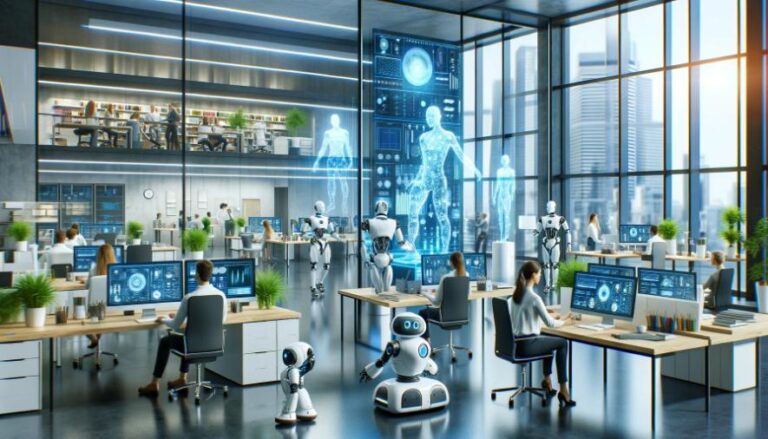The Rise of AI in Manufacturing
The manufacturing industry has undergone significant changes with the advent of artificial intelligence (AI). From improved efficiency and cost savings, to increased productivity and quality control, AI has revolutionized the way goods are produced. As technology continues to advance, it is poised to further transform the manufacturing landscape and impact the nature of manufacturing jobs.
Increased Automation and Streamlined Processes
One of the most significant ways AI has changed manufacturing is through increased automation. Tasks that were previously performed manually can now be completed by AI-powered machines, significantly reducing the need for human labor. This has streamlined processes and made manufacturing more efficient and cost-effective. AI systems are able to analyze and optimize workflows, identify inefficiencies, and make real-time adjustments to ensure maximum productivity.
The Replacement of Repetitive Jobs
With the rise of AI, many manual, repetitive jobs in manufacturing have been replaced with automated machines. This includes tasks such as assembly, packaging, and material handling. While these jobs were once suited for human workers, they are now being performed more efficiently and accurately by AI systems. This has led to a decrease in low-skilled manufacturing jobs, as companies shift towards more advanced, technology-driven processes.
Increase in Skilled and Technical Jobs
While AI has resulted in a decline in low-skilled jobs, it has also created a demand for more skilled and technical positions. As companies adopt AI technology, they require employees who can operate, maintain, and program these systems. This has led to an increase in jobs such as data analysts, AI engineers, and robotic technicians. These positions require specialized skills and knowledge, making them more lucrative and in-demand than traditional manufacturing jobs.
Improved Quality Control and Safety Measures
AI technology has also improved quality control and safety measures in the manufacturing industry. With the ability to monitor and analyze data in real-time, AI systems can identify defects and errors in products and processes, ensuring higher quality standards. This not only increases customer satisfaction but also helps companies save on costs associated with product recalls and waste. Additionally, AI-powered machines can handle hazardous and dangerous tasks, keeping human workers safe from potential accidents.
The Shift towards Customization
In the past, manufacturing was largely geared towards mass production, with a focus on producing large quantities of the same product. However, with the help of AI, companies are now able to shift towards customization and personalized production. AI-powered machines can quickly adapt to produce different variations of a product, making it easier for companies to meet the ever-changing demands of consumers. This has not only increased customer satisfaction but also opened up new opportunities for job creation in areas such as product design and customization.
The Need for Upskilling and Reskilling
The increased integration of AI in manufacturing has created a need for upskilling and reskilling of the existing workforce. As technology continues to advance, workers must adapt to new processes and acquire new skills to remain relevant in the industry. Companies are investing in training programs to help their employees learn how to work effectively with AI technology, ensuring a smooth transition towards a more automated manufacturing process.
In Conclusion
In conclusion, AI has changed the landscape of manufacturing jobs in many ways. While it has resulted in a decrease in low-skilled jobs, it has also created new opportunities in higher-skilled and technical positions. With the potential to increase efficiency, quality control, and customization, AI is poised to further transform the manufacturing industry in the coming years. It is essential for companies and workers to embrace this technology and adapt to the changing landscape in order to stay competitive in the global market.

